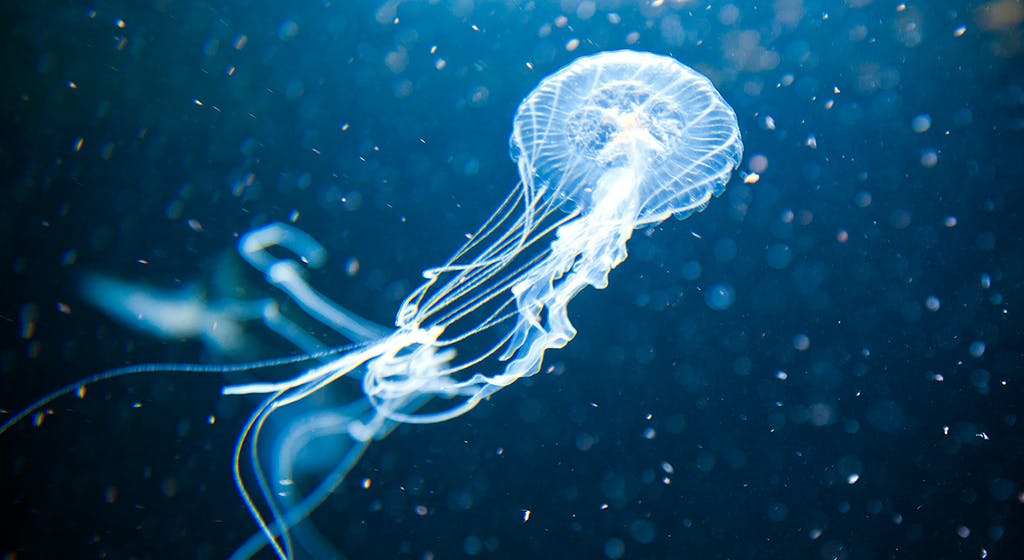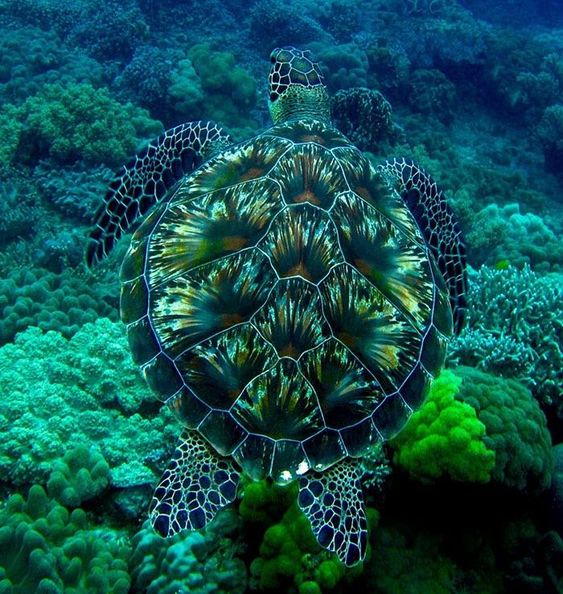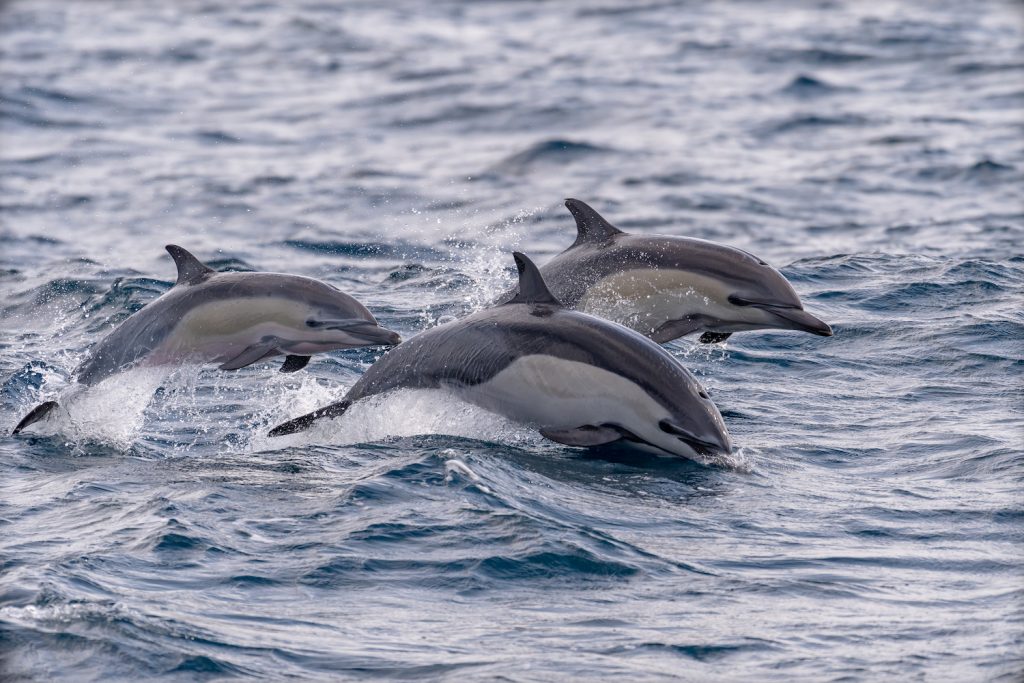The pinkish hues of daybreak interspersed with flecks of golden yellow and strands of orange are enough to mesmerize anyone. Moreover, the sweet smell of salt-infused wind and foamy water fills up your senses and leaves a tingling feeling. The expanse of blue sprawled across, touching every point of the visible horizon calls out to you. It’s an invitation that resonates within your bones. And your memory turns back pages and time to Jules Verne.
“The year 1866 was signalized by a remarkable incident, a mysterious and inexplicable phenomenon that surely no one has forgotten. Without going into the rumors that upset civilians in the seaports and deranged the public mind even far inland, it must be said that professional seamen were especially alarmed.”
The opening of “20,000 Leagues Under the Sea” forever runs in your head. And here you are, ready to embark on a journey on your own Nautilus. The cold water makes you shiver as sprays of white curl around your ankles. Wading in, it’s time to bid farewell to the terrestrial world, and enter into the depths of a deep blue realm.
I
Letting the surface currents take you first, you begin to see wisps and clusters of seemingly random specks. Taking a closer look you see that the specks are globule like creatures that are floating along with you on the currents. They can’t swim, they can’t resist the flow and direction of the current. You pause and let yourself be led by these minuscule blobs.
Gazing closer at them you feel your jaw drop at the sight in front of your eyes. These random clusters are thousands of organisms, some ranging till 20 cm while others can be as small as a few micrometers. These are called plankton, and are mainly of two types, the plantlike phytoplankton and the animal-like zooplankton. The mitochondria of the ocean, it is safe to say that marine life would not be the same without the existence of plankton. Taking the first rung of the ladder in the food chain under the ocean surface, these organisms determine the stability of marine life.
As you float along you ponder to yourself. At times, life treats you like plankton. You just float about on a seemingly random and at times chaotic course. But you should always remember to step out of the big picture for a second and look at things from a smaller view. You would then see that even though in the grand scheme of things, you’re insignificantly small, without you things wouldn’t be the same.
II
Moving on downwards, lost in thought, you feel the blood run thin in your veins and your heart rate accelerate. “It can’t be can it?” you ask yourself in fear. Ghosts aren’t real but…what is that? A pale shadow floats by in the distance, the faint rays of sunlight piercing through its veil. The light and dark blue hues of the ocean illuminating the strange ghost in an electric spark of color. You watch it propel its long and gangly appendages, barely moving, as it roams ever so slowly.
The species of jellyfish in water range from mushroom-like docile free floaters to bizarrely shaped stalkers that are armed with lethal stings. By triggered responses of chemicals or proximity, sting cells present on the tentacles of these creatures release toxins and effectively render their prey vulnerable. A bit deeper into the ocean swims a more beautiful class of ghosts, comb jellies. Usually invisible except for a shimmering rainbow of glitter that they create while moving, these ghosts are generally more peaceful and like to take their time with movement.
This time deciding to swim to the seabed you think about a haunting memory. It’s of how lonely you feel even in a crowded room. Sometimes we all just fade out to the background and move invisibly as these undersea ghosts. But the point to tell yourself is that while you yourself cannot see it, another person will be admiring the trail of glitter you leave as you walk about, with starry eyes.
III
As you reach the bottom of the ocean you feel the gates of Atlantis have been opened to you as you gaze at the wondrous sights around you. Buildings of multicolored corals and algae-covered rocks make a bustling “city” of exotic marine life.
You peer at the inhabitants of one coral to find a fiery red centipede-like creature with tufts of pinkish-white fluff growing in dense successions throughout its body. Realizing that this is the bearded fireworm you resist the urge to step back as unlike their terrestrial counterparts, these worms look too amazing to be true. Most marine worms such as the Caribbean fan worm are known for their feathery, long, retractable tentacles that inspire more of an artistic love rather than a repulsion.
You see that tufts of grass that shoot like tentacles cover the roads and fields of this beautiful city. Looking closely you notice the mix of luminescent yellow and blue veins running through each delicate blade. The lophophorate filled transportation system enthralls you, but not as much as the echinoderms lazily lounging in the public. The vivid purple, red and orange tints of the radially symmetrical and clustered starfish and sea cucumbers remind you of the little beads you used to arrange in a line, connecting each to form a little bracelet.
You smile as you see multiple types of fish darting in and around, going about their daily business in reef city. Not wanting to scare them off, or because you spotted the long line of polished and shimmering red, black and yellow scales of a coral snake, you decide that it’s time to swim back up to light blue waters.
IV
Now you move on to gaze at a bulky figure, swimming steadily through the blue ocean. This is not just an organism, but a pure inspiration. From the time she hatched to her death, she’s a fighter. And she’s the most beautiful person beneath the waves.
As hatchlings poke their little heads out of their egg casings, they enter a cruel and harsh world. In a race against time to reach the first waves on the shoreline, sea turtles are born with an adrenaline rush that makes them dart across the sandy beach. But their struggles aren’t over there. Due to marine pollution and modern fishing methods, sea turtles die every day in various stages of their life.
These magical creatures outdate us Homo sapien sapiens by millions of years. Standing the test of time, they have some of the most unique biological aspects of an animal. Modified glands that absorb and filter out salt in the seawater they drink help them sustain life underwater. Furthermore, the better-than-GPS sense of directionality that they possess allows them to swim for thousands of miles across the seas to find a location that they were in at some time.
Sadly, all eight species of sea turtles are now endangered or at threat of extinction. From the colossal and perfectly aerodynamic Leatherback, to the majestic Green sea turtle, the world will soon lose one of its best survivors if we don’t take action.
Nonetheless, you swim upwards and break through the blue sheet and look at where you are. Life is a struggle since seeing light out of the womb. But no matter how hard things get or how many times you’d feel like throwing in the towel, you should keep pushing on. Have a sea turtle as your guidance. Swim through the crashing waves and learn to escape the cunning nets. And one day, you’ll look back and see that you’ve traveled thousands of miles no matter what shade of blue it is.
V
Watching the warm rays hit the surface and bounce off in a million directions you look at the sky kissing the sea. The sound of a chuckle disturbs the sight of the more solid and teal gradient that suddenly breaks at the horizon and scatters into the deep and light blue.
Yes! You heard it right! Looking around you see a greyish wave coming towards you at a very high speed. As it gets closer you start to see the sun catching the droplets of water and making them glisten like faux beads of sweat. You listen in amazement as you “hear” them chattering among themselves like little schoolchildren. You can’t help but wonder whether they might be even gossiping about you!
The mammalians of the sea, or the family Cetacea are found in two main categories as Odontoceti or toothed whales and the Mysticeti or baleen whales. Dolphins and their distant cousins, the vicious killer whales, and calm and lazy belugas are part of the Former. The biggest animal to have existed on earth, the blue whale is of the latter. Speaking of which, the Narwhal, whale with a giant tooth protruding from its head draws your memories.
******
You remember parts of Verne’s works, those which pioneered the genre of science fiction to the world. You remember that a Narwhal was a key developmental role in his “20,000 Leagues Under the Sea”. Remembering the start of your journey into the blue, you decide it’s time to swim ashore again.
But you’re not swimming empty-handed. No! You’re swimming back with a lasting set of lessons that will always keep you moving forward with the current. Like the waves never tire of kissing the shoreline, you instill the lesson to never give up within you.
Making it to the shore you gaze out at the flecks of silvery-white now shimmering like diamonds on the darkened blue. A song plays in your head as you feel a warm sensation flowing inside you. Smiling at the ocean you look out and begin to hum.
References:
01.Hutchinson, S., & Hawkins, L. E. (2008). Oceans – A Visual Guide. Sydney: Firefly Books.
02.https://www.nationalgeographic.org/encyclopedia/plankton/
04.https://www.nationalgeographic.com/animals/reptiles/group/sea-turtles/
Image Courtesies:
01.Featured image: https://bit.ly/2BSfVx5
02.Image 1: https://bit.ly/3f3jLl2
03.Image 2: https://bit.ly/2Aid67S
04.Image 3: https://bit.ly/3f9Yx5i
05.Image 4: https://bit.ly/3dRfUrd
06.Image 5: https://bit.ly/2YikI2r






